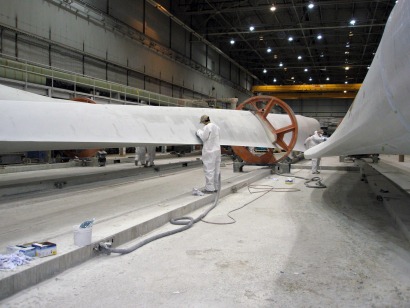
The wind turbine market is suffering from manufacturing overcapacity, falling subsidies and uncertainty in some wind power sectors says the report. Vestas announcement of its 2012 results anticipated weaker sales with a downward shift in shipment forecasts as a result.
“Costs must be kept as low as possible” said Jennifer Santos, GlobalData’s Senior Energy Consultant. “Cost-saving programmes initiated by Vestas last year, including rationalising its manufacturing base and reducing headcount, seem to have paid off and saw the company earning a positive cash flow in the fourth quarter of 2012. Similarly, revenues and operating profits before special items reached their highest level in the same quarter of last year. Gamesa expects to continue with its cost-cutting programme this year by closing more than a third of its offices and further reducing its debt.”
The dominant forces in the wind turbine manufacturing industry are the US and China which currently account for 60% of the global market, but even so their potential for significant turbine manufacturer revenue generation seems slim.
“Although the Production Tax Credit (PTC) was extended for another year in the US, the lack of a long-term, subsidy-free approach will prevent the US wind power sector from fully taking off in 2013” added Santos. “China, on the other hand, is dominated by numerous local manufacturers who all want to take a piece of the pie.”
The booming offshore wind sector also has a number of obstacles to overcome, including supply chain constraints, grid connection issues and technology problems. However, according to Santos, turbine prices have bottomed out, at least for the leading manufacturers. She predicts that if turbine manufacturers can drive down costs further in 2013 then a return to profitability is possible.
Further information:
Offshore Wind Power – Global Market Size (Global Data report)

